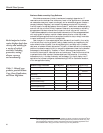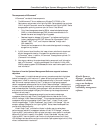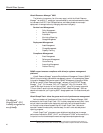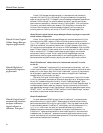
To this already robust platform, Hitachi Data Systems adds a number of solutions to
ensure quick recovery from acts of nature, human errors, application errors, and malicious
attacks. In the world of e-commerce, it is no longer enough to have a backup copy of one’s
data; businesses must also plan for rapid recovery from such outages. Hitachi Data Systems
is the only storage vendor that is providing non-disruptive copy solutions that assure fast
recovery and full data integrity.
Remote Copy, Data Duplication, Data Migration Defined
It is important to understand the differences in what has become known as the
triumvirate of copy software product categories. The jargon of copy software alternatives
is made even more confusing when traditional backup methods are considered. Advances
in technology have allowed new words such as “real-time,” “point in time” (PiT), and
“snapshot” to creep into the language of enterprise class storage. Copy products allow an
enterprise to replicate, protect, and share data in dynamic new ways. The three main terms
used for copy software are:
Remote Copy
A term that refers to to the operations procedure of continuously sending updates to
a remote geography in order to provide a time-consistent copy of that data.
Synchronous Remote Copy is typically used over short distances and careful
consideration of performance requirements is required. Asynchronous communication
techniques with methods of insuring data sequencing by timestamping are used for
longer distances. The purpose of remote copy is to protect the data in the event of a
business interruption.
PiT Copy
A process that creates a “static” image of data at a specific time (e.g., backups) is
generally referred to as Point-in-Time (PiT) snapshots.
Data Migration
Software that moves data permanently from one storage device to another. This feature
is different from data duplication in that at the end of the process there is only one
copy of data. The purpose of data migration is to consolidate storage or upgrade to
new systems.
Of the literally hundreds of solutions that vendors have devised, only three basic
functions are actually being performed:
• Point-in-Time copy (PiT copy)
• Real-time copy (disaster recovery)
•
Data relocation or data migration.
There are many reasons for the proliferation of products and techniques, but the
primary motivation is to improve on an existing design or technique. If an existing product
is insufficient in some form, that becomes the impetus for creating a newer product.
For example, early implementations of copy software would reduce backup windows
from hours to minutes by not requiring the application to endure an outage for the
duration of the Point-in-Time copy process. The application would still require an outage
(or quiesce), but merely for the duration necessary to initiate the process (seconds or
minutes). Using these products, however, the backup is not guaranteed and could
subsequently fail. This led to the development of such products as Snapshot (StorageTek),
ShadowImage
™
(Hitachi
®
), and TimeFinder (EMC
®
).
The jargon of copy
software alternatives
is made even more
confusing when
traditional backup
methods are considered.
Of the literally hundreds
of solutions that vendors
have devised, only three
basic functions are
actually being
performed.
35
The Lightning 9900 Series Software Solutions are the Best in the World


















